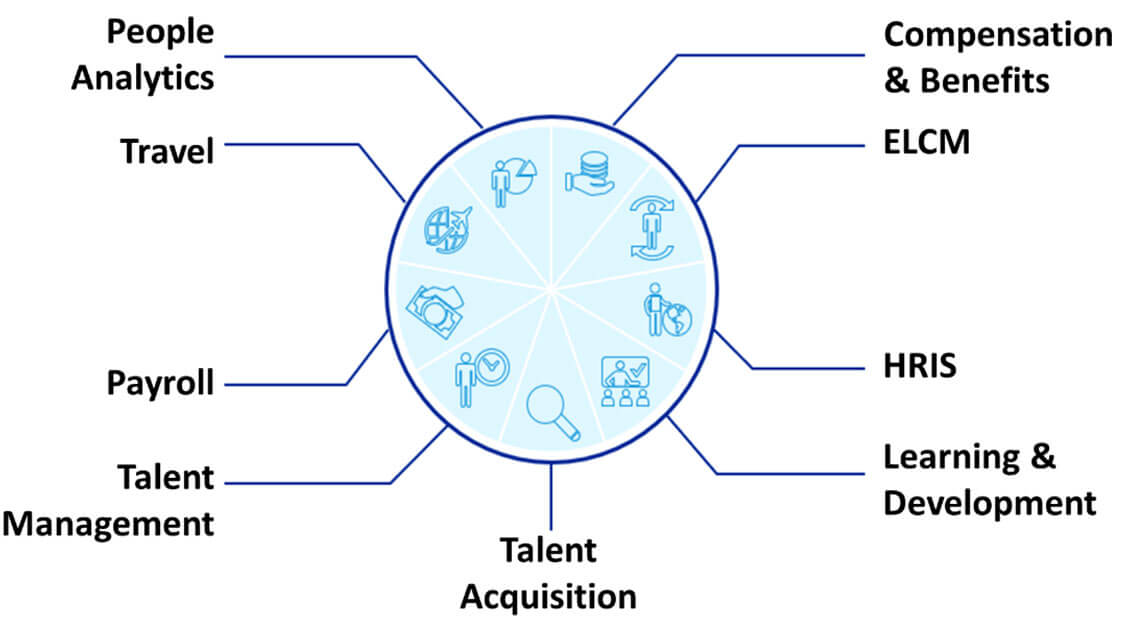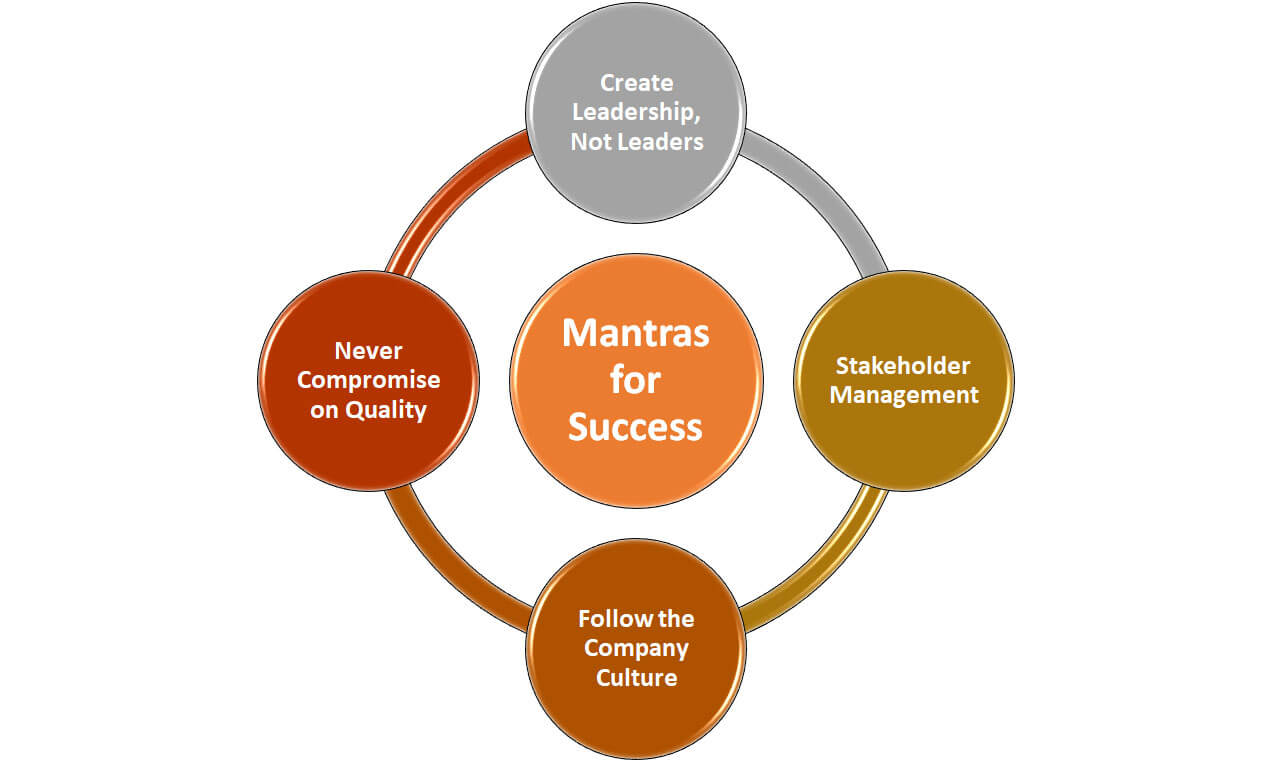INVITING APPLICATIONS
14th SSF EXCELLENCE AWARDS & RECOGNITION – 2025
LAST DATE: JUL-25 | APPLY NOW
Our corporate shared services journey started from understanding the ‘need’ for change and then building a ‘case’ for change. My journey started by ‘accepting’ the change. Traditionally in our organization, blue collared functions are highly streamlined and simplified. Almost all factories of a product look similar across the globe. However, the same was not the case with white collar processes. That became the base case for us to create simple, streamlined and agile white-collar functions at ABB. The intent was to setup structured and scalable shared service units that would enable us to operate more efficiently.
I have been an HR professional all my life, leading transformational change management projects, and developing HR frameworks – global and local. Shared services to me was a totally different ball game. With this change in mind and some reluctance, I decided to take up this unique opportunity and be a part of ABB’s transformational journey.
Defining the Goals
ABB is a leading global technology company that energizes the transformation of society and industry to achieve a more productive, sustainable future. By connecting software to its electrification, robotics, automation and motion portfolio, ABB pushes the boundaries of technology to drive performance to new levels. With a history of excellence stretching back more than 130 years, ABB’s success is driven by about 110,000 talented employees in over 100 countries.
Setting up the shared services unit was under a productivity improvement program where we had to build platforms for future growth and, at the same time, show savings for the organization. The program aimed to create a more streamlined, less complex, more agile ABB. This would, in turn, simplify and stabilize the processes and enable the organization to operate more efficiently.
We recognized that at times the organization processes and roles were not defined between HR Business Partners, HR Country Manager and the HR Corporate Centre. There was also the need to have consistent processes, create a cost-efficient vendor landscape and deliver value to the organization. These factors indicated the need to build a professionally run global shared services unit. The goals of the unit were to have:
- Globally consistent end-to-end processes through global and regional service centers and CoEs.
- Common metrics and KPIs to improve analysis and actions.
- Efficient delivery through self-service tools.
- Clearly defined SLAs & roles to deliver quality and standardized services.
- Discipline in data management to ensure data integrity and to enable better people-related business decisions.
The 3-Pillar Model
ABB has always promoted equality through its 3-pillar service model, which also made us successful in taking the shared services project forward. Prior to the shared services set-up, all ABB countries were getting services based on the size of the location and resources available. However, post the shared services set-up, all the locations, irrespective of the size of business, country, complexity, receive world-class HR services.
The 3-pillar model was created with the ambition of adding more value to the businesses and operating at the highest quality standards - with speed, simplicity and efficiency. This enabled us to become more effective in our service delivery.
These 3 pillars of service were:
HRBP: Accountable for overall HR contribution to the business and to deliver on business objectives
COE: Provide expertise in key functions like talent & learning, global mobility, compensation & benefits, labour relations and people analytics.
GBS: Provide scale to operations and process improvements
The ‘Mantras’ for Success
The goals for the shared service centre were established by using the 3-pillar model as the backdrop. For me, the goals were clearly necessary, as they defined the perfect next steps in the organization’s scheme of growth. On the other hand, they were a tall order, given the incredibly ambitious timeline required to be adhered to. In my journey, starting from finding my way around the shared services space, I made 4 simple rules that I would follow. The irony is, that some of them were about what not to follow while setting up shared services.
These rules have since become the ‘mantras’ – which are to be invoked towards the delivery of very specific results. The mantras worked for me and the team successfully every time.
1Build Leadership, Not Leaders
I still remember those days when we had to cover 7 reviews and phases before we could declare a country to be “live”, meaning transitioned. Each review was no less worrisome than a board level school exam. We were always afraid of forgetting something critical messing up something. But I just moved ahead with one thing in my mind, which was – “when in doubt, trust your team”. It was very clear to me from day-one that no single person can mastermind the creation of a professionally run services centre. It has to be a congregation of effort and strengths of a diverse set of leaders.
I therefore made it my principal goal of developing the inherent leadership traits of leaders at all levels. I ensured that each of my team members knew the end goal, internalized it, lived it and worked towards it.
They were encouraged to develop their sense of ownership towards defined roles. They were also encouraged to develop the spirit of cooperation as opposed to competition. This seemed to work better than having a few accountable managers, which could have resulted in disagreements and discussions, in turn resulting in unnecessary delays in the long run.
This worked as a guiding ‘mantra’ for me throughout my journey. We went from a handful of FTEs to setting up the whole centre in a record period of time and that was the first success for us. The core team together was able to replicate processes across various geographies and locations to create a leadership driven centre. We were able to lift and shift dozens of processes simultaneously from various regions into the centre.

The HR processes that were being transitioned from these countries included the complete hire-to-retire portfolio – Talent Acquisition, Talent Management, Payroll, Travel, People Analytics, Compensation & Benefits, Employee Life Cycle Management, HR Software Solutions, Learning & Development and several others, impacting employees across all areas of HR.
2Stakeholder Management – Doing the Right Thing
In this journey, other than knowing the jargon of the industry, the most important aspect was stakeholder management. There was a time when I woke up to a new challenge everyday. However, a little further into the journey, I realized that there was no need to always be playing from the back-foot. If we could have the facts in place, we could well play on the front-foot. We undertook unlimited conference calls, meetings, discussions, etc. We exchanged viewpoints emphatically and often. It was quite taxing sometimes but now when I look back, I feel it was worthwhile, which kept giving us confidence to move ahead.

Engaging with country leadership, excellent communication strategy, bringing global perspectives and involving all stakeholders helped bring the journey to its next level.
I believe that it is all about building a powerful and supportive relationship through alignment of core values and clear communication that results in long-term partnerships, critical for success – instead of having merely a transactional vendor mind set. Here, I should thank ABB as an organization, for always promoting equality through all its pillars, which made us successful in taking the project forward.
Thankfully, this job with multiple challenges soon became the best experience of my life.
3Core Culture Cannot be Compromised
From the start of my journey, everybody told me that shared services organizations have a different culture, and that we need to adopt it in order to survive – and also that it is very different from ABB’s culture.
We decided, very soon in the journey, that no single activity could change the culture of the company. Culture is a much larger, deep-seated phenomenon and building a vertical like shared services center should not upset it.
One corporate culture has to be preserved and permeated. If different arms are joining under one umbrella, then it becomes important that all of them align with that common culture.
Yes of course, based on the special circumstances, such as having a bunch of younger generation teammates, certain nuances have to be catered to, but it is equally important to safeguard the overall culture.

4Quality First – Every time, Everywhere
While executing any project, such as setting up a shared services centre, one can be tempted to save money and compromise on quality. However, being ABB, we always kept quality on the highest pedestal. In fact, our advice in such a circumstance will always be to not be penny-wise, pound-foolish, especially during the build phase. A stage will surely come when the results of good, but maybe expensive decisions, taken earlier start reaping good benefits.
For instance, in the initial stages while we were getting the first set of employees, we completely focused on the best quality of the talent rather than the cost. The people hired were a mix of different competencies, but we were confident that we could get the required productivity with this team. In the build phase, quality of our resources defined our initial success Cost cutting was not our strategy and our entire focus was on getting the right person for the right job.
Another perfect example of no compromise on quality was our decision to build certain capabilities in-house, upfront. For instance, we hired visual designers and writers for knowledge capture, instead of relying heavily on external consultants. This resulted in our quality of documentation becoming world class, which has impacted our process management and training.
What Worked Well
These 4 mantras turned this journey, which started from ground zero, into a big success story. The transformation project, which initially seemed quite an unreachable goal, kept throwing darts at us from all around, all the time. I can say with utmost confidence that each time, we resorted to our sacred ‘mantras’ to find the right solutions for us, and each time we came out successful.

Globally, the centre is now being governed with local presence where necessary, to support the business and statutory requirements. Now we have:
- Well-defined processes, tools and methodologies including control over external spend.
- Improved governance to provide enhanced advice and oversight to global businesses.
- Global resources to better leverage talent, resources and scale
ABB as an organization and the senior leadership team were always clear in what they wanted to achieve. A lot of credit goes to their conviction of making the impossible, possible with their leadership direction. Though we still have a lot to achieve and it is a journey of continuous improvement, I am confident that ABB and all its businesses have adapted to the shared services set up whole-heartedly.
ABOUT THE AUTHOR

Neha is an HR professional with over 15 years of leadership experience at global, regional and local levels. She has worked in all facets of HR – COE, HRBP and shared services across geographies in manufacturing, engineering and IT industries. She has been instrumental in establishing a shared service centre in record time. She has a deep understanding in leading large transformational change management projects – from conceptualizing to execution. She is a people leader, a design thinker and digitally astute.
Currently she is the head of Global HRBP in one of the business lines at ABB.



 Ask an Expert
Ask an Expert



